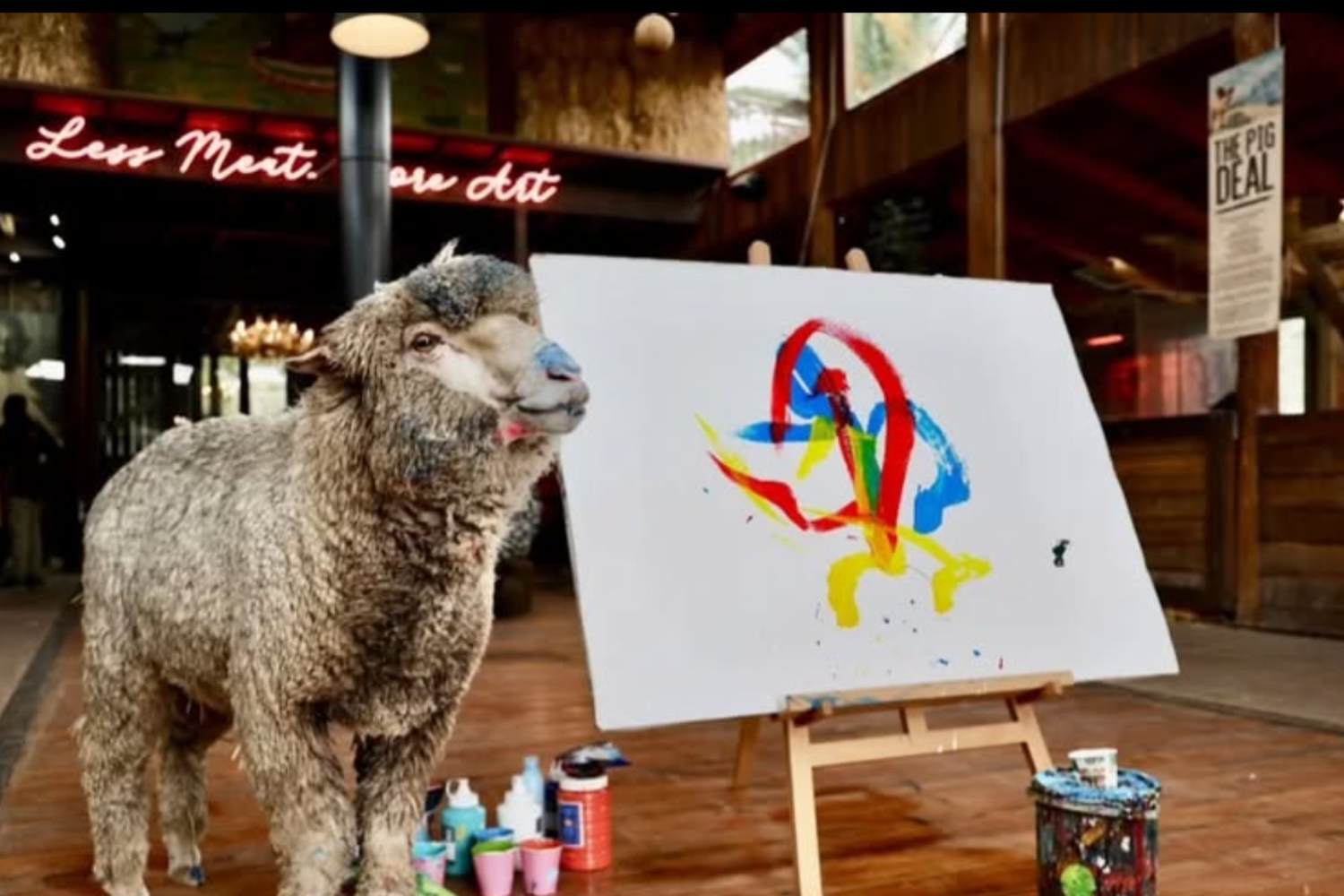The mysterious disappearance of Baanksy, the artist sheep, is mobilizing the entire world: a reward of $64,000 is expected for whoever finds her

@farmsanctuarysa/Instagram
A strange incident has caused shock waves in the art and activist communities in South Africa. Baanksy, the artwork sheep that resides at the Farm Sanctuary SA in Franschhoek, went missing on February 1, 2025, under enigmatic conditions. Her artwork, besides being a curious phenomenon, has heightened people’s sensitivity to animal welfare and raised money for the sanctuary. A reward of 1.2 million South African Rand (approximately $64,000) has been issued for her return.
Baanksy had an appointment for a painting session on the day she disappeared but did not show up. A red alert was sounded: there was no forced entry, and none of the other animals from the farm had disappeared. This prompted Joanne Lefson, the director of the sanctuary, to suspect a deliberate theft. “Why Baanksy? We have quite a few of our own sheep, goats, pigs, and chickens, but none of them were disturbed,” Lefson said, assuming the animal was taken intentionally.
Baanksy is no ordinary sheep. She was rescued as a lamb and drew inspiration from watching Pigcasso, the famous pig painter who had paved the way. Pigcasso’s paintings gained huge success before he died in 2023. Baanksy grew her own painting style and has so far finished 17 paintings, some of which have been sold for prices up to $1,900.
Investigation underway: the hunt for baanksy continues
As mentioned, Baanksy’s art is not just a media phenomenon; it is a genuine way of raising awareness and funds. All of her works contribute to raising funds for the Farm Sanctuary SA and support the activities of the sanctuary as well as disseminate messages about respect for animals. Her disappearance is an emotional loss, but it is also a measurable setback for the cause which Lefson so passionately supports.
The local police are looking into the case with the help of private detectives. Lefson herself, in fact, has appealed publicly for any information that people who may have details about Baanksy could provide. “Baanksy’s normally paint-stained hooves make it easy to see her,” she wished, hoping that this particular characteristic could be of help in identifying her.
The case has interested many, agitating individuals everywhere in the world. A few social media forums have shared stories of her loss to attempt her whereabouts. Her return is being wished for promptly so that she can resume work on the painting—perhaps a bit more than before and not so much with humanization. Meanwhile, the world is just waiting for Franschhoek to unfurl a storybook ending.
